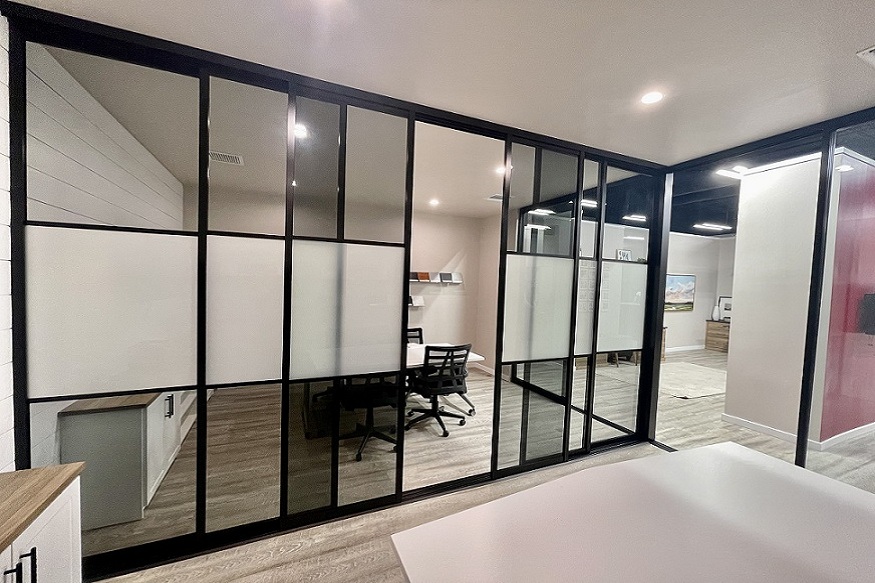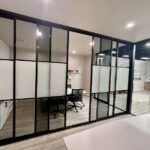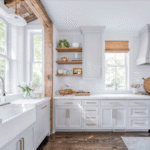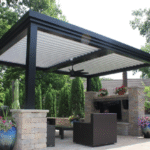
The open-plan living concept has reigned supreme in modern interior design for decades, celebrated for its expansive feel and social fluidity. Yet, as our homes have adapted to serve as offices, schools, and private retreats, the need for flexible, functional separation has become paramount. The glass sliding door room divider emerges as the elegant solution to this modern dilemma. It provides the necessary acoustic and visual delineation without sacrificing natural light or the perception of space. Choosing the perfect system, however, involves more than just selecting a piece of glass; it requires a deep consideration of your existing interior style, the functional needs of the space, and the specific aesthetic details of the framing and hardware.
A well-chosen Glass Sliding Door Room Dividers in Los Angeles – KNR Sliding Doors becomes an architectural feature, enhancing the flow and light of your home while offering critical versatility. It allows you to transform one large area into two distinct zones—a formal dining area and a casual living room, or a bustling home office and a quiet reading nook—with a simple, silent glide. The perfect divider acts as a subtle, transparent wall, reflecting your personal style while maximizing the usability of your floor plan.
Understanding Your Interior Style: Form Follows Function
The first and most critical step in selecting a glass sliding door is to identify the dominant style of your home. The divider must serve as a harmonious extension of your existing décor, not a jarring interruption.
- Minimalist and Modern: For sleek, contemporary spaces, the focus should be on simplicity and seamlessness. Look for frameless or ultra-slim framed systems. These typically feature clear or low-iron glass and utilize recessed floor tracks or top-hung hardware that is entirely concealed. The hardware itself should be matte black, brushed stainless steel, or polished chrome to match the clean lines of modern design. The goal is to maximize the transparency of the glass and minimize the visual weight of the frame.
- Industrial and Loft Style: This style embraces raw materials and bold lines. The ideal choice here is a steel-framed system with a grid pattern, often referred to as Crittall-style doors. The thick, dark metal frames (typically black or dark gray) and multiple glass panels create a strong, graphic division that echoes the factory windows of the industrial era. Choose clear glass to retain the open, airy feel of the loft while adding architectural texture.
- Traditional and Transitional: In homes with classic moldings, rich textiles, or transitional furniture, the divider should have a warmer, more substantial feel. Opt for wood frames (painted white for a coastal or cottage look, or stained dark for a more formal aesthetic). Look for doors that incorporate larger, perhaps beveled, panes of glass or subtle muntin patterns that mimic classic French doors. Hardware should be visible and detailed, perhaps using bronze or brass finishes to add a touch of warmth and elegance.
Hardware and Track Systems: The Mechanics of Movement
The track and hardware system is the mechanical heart of the glass sliding door. The quality of these components determines the ease of operation, durability, and overall aesthetic finish. There are two primary track types:
- Top-Hung (Suspended) Systems: This is the preferred method for a clean, seamless look. The entire weight of the door is carried by the track mounted to the ceiling or a header beam. This eliminates the need for a bulky floor track, providing an unbroken transition across the floor. This system requires a structurally sound ceiling or wall for support.
- Bottom-Rolling Systems: These utilize a track on the floor to bear the door’s weight and are guided by a top rail. While they require a floor track, they are often easier to install in spaces where the ceiling cannot support the door’s weight. Look for minimal, low-profile floor tracks to reduce tripping hazards and visual clutter.
Pay close attention to the quality of the rollers and bearings. High-quality systems use precision bearings that ensure a smooth, nearly silent, fingertip glide. Also consider features like soft-close mechanisms, which gently brake the door’s momentum as it nears the frame, preventing slamming and increasing the lifespan of the system.
Conclusion: Function Meets Finesse
Choosing the perfect glass sliding door room divider is a detailed exercise in balancing architectural style with functional necessity. It requires moving beyond simple appearance to consider the safety rating of the glass, the seamlessness of the hardware, the integrity of the frame, and the specific acoustic needs of the divided space. When the correct material, transparency, and mechanical system are harmonized with your home’s existing aesthetic—whether minimalist, industrial, or traditional—the divider ceases to be merely a separation tool. It becomes a central design element, filtering light, defining space, and framing the interior flow of a truly modern, versatile home.






Leave a Reply
You must be logged in to post a comment.